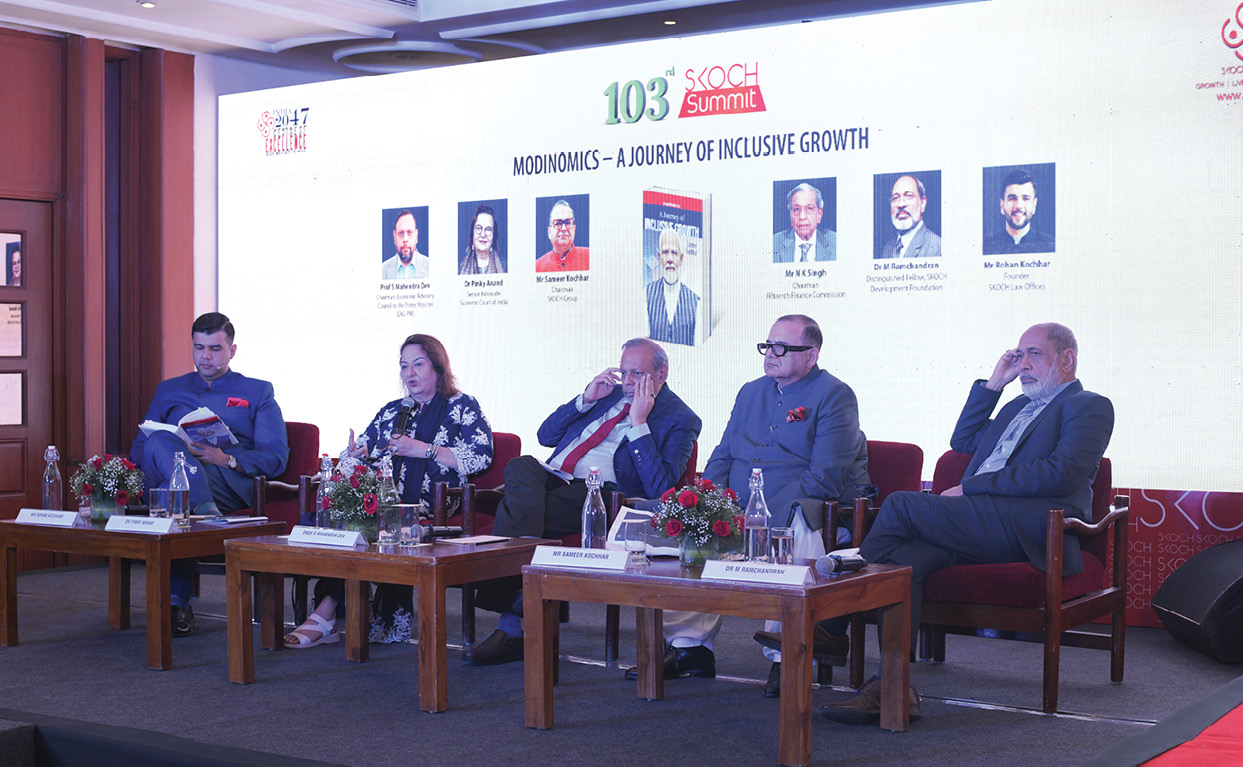Key Points*
- Who Really Governs? – Poses a defining question for the 21st century: do elected governments control nations—or the algorithms and infrastructure that process our data?
- Digital Sovereignty, Defined – The state’s capacity to control its data, infrastructure, and governance frameworks—vital to avoid dependence on external platforms for communications, cloud, and critical systems.
- SKOCH’s Law-Grounded Framework – Introduces a comparative, evidence-based index of digital sovereignty and security, derived directly from actual laws and policies across the US, UK, EU, China, and India.
- Seven Pillars – 1) Legal & Jurisdictional Sovereignty, 2) Data Protection & Digital Rights, 3) Cybersecurity & Resilience, 4) Digital Infrastructure & Cloud, 5) Governance, Risk & Compliance (GRC), 6) AI/Automation & Emerging Tech Accountability, 7) Institutional & Regulatory Framework.
- From Themes to Metrics – Measures governance autonomy, tech infrastructure, data localization/protection, cybersecurity capacity, and economic–industrial capability.
- Granular, Comparable Indicators – 38 indicators and 136 sub-indicators, coded yes/no and mapped to specific statutes/regulations, enabling country-to-country comparison and time tracking.
- Diagnose Vulnerabilities, Not Slogans – A country can be strong on cyber defense yet weak on data/infra sovereignty; the framework pinpoints where to intervene.
- Click-Through Legal Traceability – Each “yes” links back to the underlying law, making the framework transparent, auditable, and academically verifiable.
- Tools for Policy & Accountability – Supports comparative research, policy design, and oversight—holding states and corporations accountable for digital sovereignty outcomes.
- Toward a ‘GDP’ for Sovereignty – Calls for a universal, rigorous metric to discuss digital power; the SKOCH Indicators are positioned as the first step toward that standard.
* This content is AI generated. It is suggested to read the full transcript for any furthur clarity.
Transcript
Hello. Hello. Yeah, good evening everyone. I would like to start my presentation with a question. Who controls a nation in the 21st century? Is it the government we elect or the algorithms and infrastructure that process our data?
This question is not rhetorical. Across the world, nations are realizing that sovereignty is no longer just bounded to territory, but also the ability to govern its digital infrastructure, secure data and also shape rules in its cyberspace. The SKOCH Development Foundation has been working on translating this realization into a rigorous framework. We today propose a way to measure digital sovereignty and security systematically through indicators derived from actual laws across the countries: US, UK, China, India, and the European Union.
Now the question arises—why digital sovereignty matters? And what exactly is digital sovereignty? Digital sovereignty is the capacity of the state to control its digital destiny—its data, its infrastructure and its governance frameworks. Without it, even the strongest states can be dependent on external platforms for communications, cloud services as well as critical infrastructure. Yet despite its importance, we lack a clear, systematic way to assess how sovereign or vulnerable digitally, a country is. This is the gap our framework addresses.
As you can see on the screen, our framework has seven: Legal and Jurisdictional Sovereignty; Data Protection and Digital Rights; Cybersecurity and Resilience; Digital Infrastructure and Cloud; Governance, Risk Management and Compliance; AI, Automation and Emerging Tech Accountancy; Institutional and Regulatory Framework. These seven pillars are built around the key themes.
Now the key themes are: first, governance and legal autonomy—does the country have laws and regulations and institutions to govern its digital space independently? Second comes its technological infrastructure—is the country investing in its digital infrastructures from data centers to telecom networks? Third comes the data sovereignty and localization—how the sensitive data is stored, processed and protected? Next comes the cybersecurity capacity and a country's economic and industrial capability.
Each pillar is measurable through a set of indicators and sub-indicators, allowing for comparability across countries and over time. There are 38 indicators and 136 sub-indicators identified for the implication of the framework. We can imagine a country that has robust cybersecurity defenses but relies almost for the majority of their work on foreign data centers. Under this framework, the country would score high on security but low on sovereignty in terms of infrastructure and data control. This approach allows us to diagnose vulnerabilities and prioritize areas of interventions rather than treating digital sovereignty as a mere political slogan.
I would also like to specially mention that these indicators are not abstract or speculative. They are coded directly from legal and regulatory frameworks across five countries. We have systematically analyzed laws, strategies, policy documents and translated the qualitative fragmented provisions into quantitative, comparable indicators. This framework not only makes it theoretically robust, but also empirically verifiable.
Each indicator is in the binary yes/no form and is mapped directly to the law that substantiates its being. For example, if we go to the pillar Data Protection and Digital Rights, as you can see on the screen, the first right, which is very important for a data fiduciary, that is right to access. When you go on the countries, the countries are marked either yes or no, and when you click on the yes, it will directly lead you to the law, which—okay, I hope—yeah, okay—so it will directly lead us to the law where the indicator has been mentioned.
This framework, lastly, I would like to say, creates a structured basis for comparative research on digital governance. It also provides a diagnostic tool for policy analysis, identifying where sovereignty is strong and where it is compromised, and offers evidence to hold states and corporations accountable for digital sovereignty.
As I conclude, I would like to say, just as GDP gave us a universal metric to talk about economic strength, we need a framework to talk about digital sovereignty with rigor and clarity. This indicator framework—or you may call the SKOCH Indicators—is our first step in the direction by building a systematic, law-grounded and comparative tool to evaluate digital sovereignty across nations.
Thank you.

